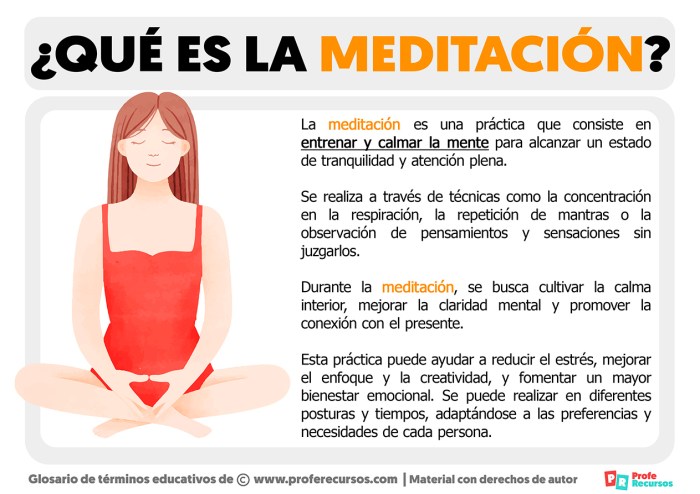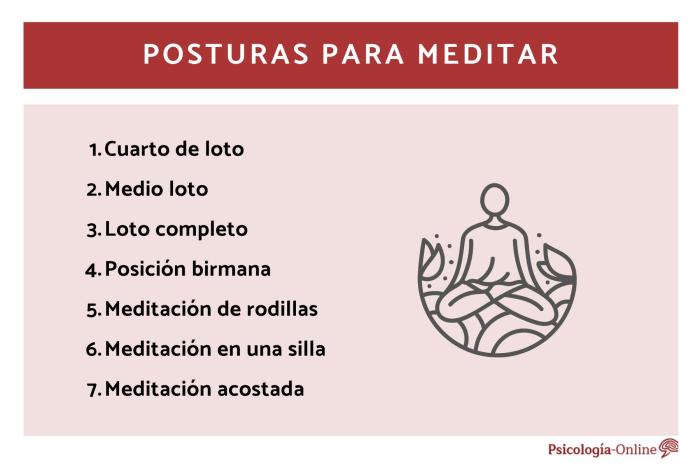6 Tips for Meditating with Distractions takes center stage, inviting you into a world of mindfulness and focus. Let’s explore how to navigate distractions and enhance your meditation practice with these valuable insights.
In this guide, we will delve into practical tips and techniques to help you stay centered and calm amidst the chaos of everyday distractions, allowing you to cultivate a deeper sense of peace and clarity in your meditation sessions.
Understanding Distractions in Meditation

Distractions in meditation refer to any external or internal stimuli that divert your attention away from the present moment or the object of focus. These distractions can range from noises, physical discomfort, wandering thoughts, to emotions and sensations.
Impact of Distractions on the Meditative Process
Distractions can disrupt the flow of your meditation practice and hinder your ability to achieve a state of deep focus and relaxation. They can lead to frustration, impatience, and a lack of progress in your mindfulness journey.
Examples of Common Distractions During Meditation
- External noises such as traffic, construction, or people talking.
- Physical discomfort like an itchy nose, sore muscles, or an uncomfortable sitting position.
- Wandering thoughts about the past, future, or to-do lists.
- Unpleasant emotions like anxiety, stress, or sadness.
- Sensations in the body such as pain, tingling, or warmth.
Importance of Acceptance

When it comes to meditating with distractions, the importance of acceptance cannot be overstated. Acknowledging distractions without judgment is a key component of maintaining focus and inner peace during your practice.
Significance of Acknowledging Distractions
Acceptance allows you to observe distractions as they arise without getting caught up in them. By acknowledging distractions without judgment, you can prevent them from derailing your meditation session and stay present in the moment.
Refocusing with Acceptance
Acceptance can help you refocus during meditation by allowing you to gently guide your attention back to your breath or mantra without getting frustrated or upset. Instead of resisting distractions, acceptance enables you to let them come and go without disrupting your inner calm.
Techniques for Cultivating Acceptance
- Practice self-compassion: Be kind to yourself when distractions arise, and gently guide your focus back to the present moment.
- Label distractions: Instead of getting lost in distractions, simply acknowledge them by labeling them as ‘thought,’ ‘sound,’ or ‘sensation’ before returning to your point of focus.
- Use affirmations: Repeat positive affirmations to yourself, such as ‘I accept this moment as it is,’ to cultivate a mindset of acceptance during meditation.
Creating a Distraction-Free Environment
Creating a peaceful and conducive environment for meditation is essential to help you focus and minimize distractions. External factors like lighting, noise, and temperature play a crucial role in setting up the perfect space for your practice. Here are some tips to make your meditation space comfortable and inviting:
Optimal Lighting
- Avoid harsh lighting and opt for soft, natural light if possible.
- Use candles or dimmer switches to create a calming atmosphere.
- Consider using a Himalayan salt lamp for a soothing glow.
Noise Control
- Choose a quiet room or use earplugs to block out external sounds.
- Play soft, instrumental music or nature sounds to mask any distracting noises.
- Consider using white noise machines to maintain a peaceful ambiance.
Optimal Temperature
- Ensure the room is neither too hot nor too cold for your comfort.
- Use blankets or shawls to stay warm during meditation.
- Open a window for fresh air or use a fan to regulate the temperature.
Techniques for Dealing with Distractions
When distractions arise during meditation, it can be challenging to maintain focus. However, there are various techniques that can help you navigate these interruptions and return to a place of peace and mindfulness.
Noting Technique
- One effective method for dealing with distractions is the “noting” technique. This involves labeling distractions as they arise without becoming attached to them.
- When a thought or sensation pulls your attention away from the present moment, simply acknowledge it by mentally noting it as “thinking,” “feeling,” or “hearing,” and then gently guide your focus back to your breath or mantra.
- By labeling distractions in this way, you create a sense of distance from them, allowing you to observe them without getting caught up in their narrative.
Bringing Focus Back to the Breath or Mantra, 6 Tips for Meditating with Distractions
- If you find yourself getting distracted during meditation, gently redirect your attention back to your breath or mantra.
- Focus on the sensation of the breath as it enters and leaves your body, or repeat your chosen mantra to anchor your mind in the present moment.
- Each time you notice your mind wandering, simply acknowledge the distraction and return to your point of focus with kindness and patience.
Developing Concentration and Focus

To deepen your meditation practice and effectively manage distractions, it is crucial to work on enhancing your concentration and focus. By developing these skills, you can cultivate a sense of inner calm and mindfulness that can help you navigate through distractions with ease.Concentration and managing distractions go hand in hand in meditation. When you strengthen your ability to concentrate on a single point of focus, such as your breath or a mantra, you naturally become better equipped to handle external distractions that may arise during your practice.
With improved focus, you can anchor your awareness in the present moment and maintain a sense of clarity amidst distractions.
Practices to Improve Focus During Meditation
- Focus on your breath: Concentrate on the sensation of your breath as it enters and leaves your body. This simple yet powerful technique can help anchor your attention and enhance your focus.
- Use a mantra: Repeating a mantra silently can provide a focal point for your mind and prevent it from wandering. Choose a word or phrase that resonates with you and use it to center your thoughts.
- Body scan meditation: By systematically scanning through different parts of your body, you can cultivate awareness and deepen your concentration. This practice can also help release tension and promote relaxation.
Exercises to Enhance Concentration Outside of Meditation
- Mindful walking: Pay attention to each step you take, the sensations in your feet, and the movements of your body. Engaging in mindful walking can sharpen your focus and bring you into the present moment.
- Reading: Delve into a book or article that captivates your interest and immerse yourself in the content. Reading attentively can train your mind to concentrate for extended periods and improve your overall focus.
- Jigsaw puzzles or Sudoku: Engaging in puzzles that require mental focus and problem-solving can boost your concentration skills. These activities challenge your mind and enhance your ability to sustain attention.
Consistency and Patience in Meditation Practice: 6 Tips For Meditating With Distractions

Consistency and patience play crucial roles in the practice of meditation, especially when dealing with distractions. By maintaining a regular meditation routine and cultivating patience, one can effectively overcome obstacles and deepen their practice.
Importance of Consistent Practice
Consistent practice is key to developing a strong foundation in meditation. It allows the practitioner to train their mind to focus and stay present, making it easier to navigate distractions. By meditating regularly, distractions gradually lose their power and become less disruptive over time.
The Role of Patience
Patience is essential when facing distractions during meditation. Instead of becoming frustrated or discouraged, practitioners can cultivate patience by acknowledging distractions without judgment and gently guiding their focus back to the present moment. Patience allows for gradual progress and growth in meditation practice.
Strategies for Maintaining a Regular Meditation Routine
- Acknowledge and accept distractions: Instead of resisting distractions, acknowledge their presence and gently redirect your focus back to your breath or chosen anchor.
- Set realistic goals: Start with shorter meditation sessions and gradually increase the duration as you build consistency.
- Create a designated meditation space: Establishing a quiet and comfortable environment for meditation can help minimize external distractions.
- Practice mindfulness throughout the day: Cultivate mindfulness in daily activities to reinforce the habit of staying present and focused.
- Seek support from a community or teacher: Joining a meditation group or seeking guidance from a teacher can provide accountability and encouragement to maintain a consistent practice.
- Be kind to yourself: Understand that distractions are a natural part of meditation practice and treat yourself with compassion and patience as you navigate them.
Ultimate Conclusion

As we conclude our journey through the realm of meditation with distractions, remember that the key lies in consistency, patience, and a gentle acceptance of the wandering mind. By incorporating these tips into your practice, you can transform distractions into opportunities for growth and self-discovery.